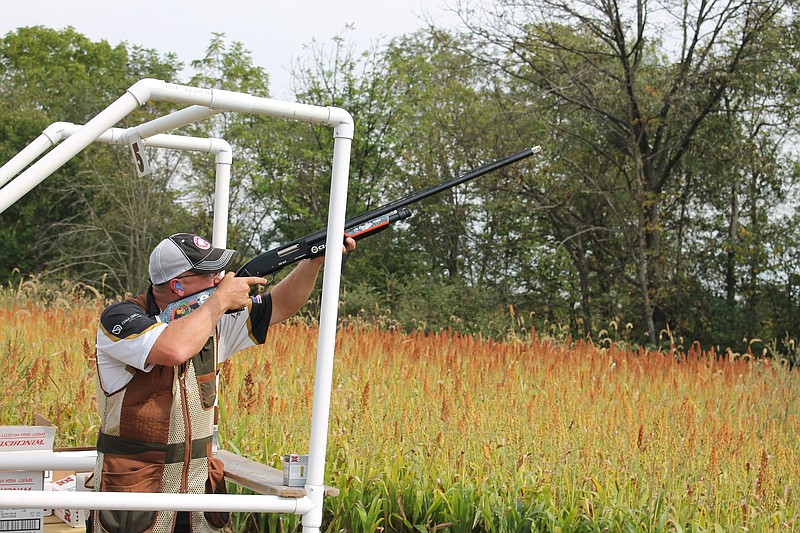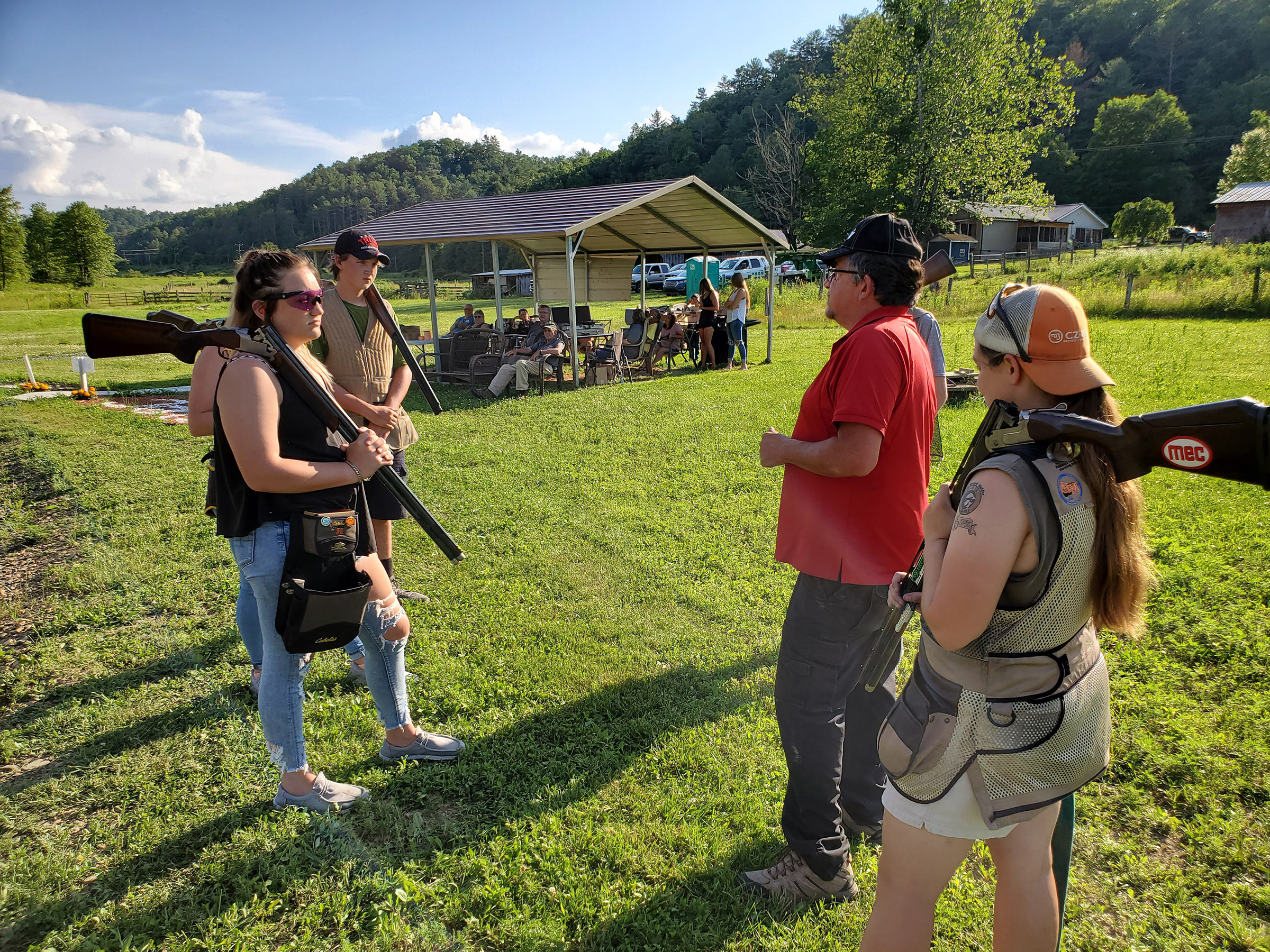I have noted here more than once in the past few weeks that it is, in fact, summertime.
Usually when I tell you this, dear readers, I make some kind of remark that you should be out there burning powder, that is, shooting firearms in some form.
Shooting firearms for pleasure is really a year-round activity, but summer is a time when it is warm (sometimes too warm), so we want to get outside and do things. Shooting is a good thing to do.
Also, and I hate to bring it up again, but summer is on its downhill slide, and according to my famously poor math skills, less than a month remains until the opening of dove season (usually Sept. 1, but check your state's regulations). Yes, you read that right: Less than a month, and you could be standing on the edge of a field, sweating in the heat, and you haven't hit a bird yet after a box of shells.
The shotgun games I will write about here will help greatly with that.
It occurred to me recently that I have not talked to you enough about shotgun shooting and the shotgun sports lately. There is a wide variety of shotgun-related sports, and if you like to shoot, they are great fun.
(Now there is that fun thing again, we are supposed to be having fun out there, right?)
Before we get too deep into the actual shotgun games and all the rules and whatnot about them, let's talk about all the benefits — physical, psychological — and the simple plain beauty of seeing a clay target disintegrate into powder after the boom of a shotgun.
Those who are not shooters will not understand this, which is a pity, but if they go just one time to a trap or skeet range and try it, they will be changed forever. That first time, that first magical time when they mount the gun and bring it to bear on a flying clay target and pull the trigger to see the clay evaporate into a fine mist, is a wonderful experience.
So here, my brothers and sisters in camo and shooting vests, is a short, down and dirty intro to some of the basic shotgun games for you to try. You old and experienced shotgunners out there will no doubt think it rather simplified and trite, but we need to give the new shooters out there some information on getting started.
OK, here is your course in Shotgun Games 101, covering trap, skeet and sporting clays.
TRAP
I have no problem telling you the game of trap is my favorite shotgun game, and the reason is simple: I think it is the easiest.
Now there are shotgunners out there who would leave me in the dust on any range that will disagree with this. They think trap is not the easiest game. Why they think this is an absolute mystery to me, but we must forge on.
American trap that we shoot here in the USA is different from European or Bunker trap that has an English or European origin. Our game of trap evolved when the sport of live pigeon shooting started to fall into disfavor in the late 1800s. In the live bird game, the shooter would call to the person operating a cage to release a bird (this person is called the trapper). The trapper would pull a string to release the bird, so the shooter would call "Pull!" This tradition is still with us today in how you call for a target on the trap (or skeet) range.
Trap is generally shot with a five-person squad standing on fixed positions lined up on a curved row. The shooters are 16 yards from the trap house, which contains an oscillating target thrower. The targets can be thrown 27 degrees right or left of center and are going more or less away from the shooter.
A squad of five experienced shooters is a thing of beauty to watch and reminds one of a well-oiled machine. As one shooter pulls the trigger, the next in line closes his gun (if it is a break-action model) and raises it to shooting position, calls for the target ("Pull!") and makes the shot. The next in line continues all this. The shooters rotate positions after every five shots, and when they have expended 25 rounds of ammo, the game is over. A round of trap will take only about 15 or 20 minutes, and I believe it is the best game for the beginner to start on.
On a side note, the older, very experienced trap shooters (you can recognize them with the baggy pants) can be notoriously grouchy around new shooters. Don't let this faze you one bit. Go to the range, watch and listen for a while, and learn.
When it is your time to shoot, it would be good to start on a squad of other inexperienced shooters with one old hand who is willing to help and teach. Any gun club will have such shooters around, and most older shooters (even the grouchy ones) will welcome the chance to share all their wisdom once they get to know you.
Go and learn and have fun. Don't worry about your scores when you start down the shotgun trail.
SKEET
We are told that in the 1920s, a couple grouse hunters in New England invented the game of skeet (I'm not sure if they were drunk or just mean-spirited) to make you more proficient at hitting ruffed grouse.
Many shooters (including me) think the targets in skeet may be more related to dove- and duck-shooting scenarios in the field than upland hunting (such as grouse or pheasants), where the birds are in general flying away from you. The targets in skeet offer a lot of crossing shots and some coming toward you.
The skeet field consists of two trap houses on either side of the field. On the left is the "high" house, which is taller than the one on the right, which is the "low" house. There are seven shooting stations in a half-circle connecting the two houses, with the last, station 8, being in the very middle between the two houses. (I personally believe that station 8 was invented by the devil himself.)
A squad of shooters make its way around the positions and shoots singles at all the stations, then shoots doubles at 1, 2, 6 and 7. On your first miss, you get one redo, called an "option" or a mulligan, and if you have no misses, lucky you, you get to shoot the station 8 low house bird twice.
Just to get this out of the way, I detest skeet mostly because I really stink at this game. I know it is probably some kind of mental block I developed long ago, but I just can't seem to climb out of that hole.
More than a few times I have had good shooters tell me that skeet is not that hard once you figure out the angles of the different stations, and in fact they think the game of trap is more difficult. I usually just thank them and smile, then walk away toward the trap field.
I would suggest going to the skeet field the first time with an experienced shooter who is there to help you and get you past the initial bumps in the road. If possible, don't make your initial foray into the skeet world with a squad of experienced shooters who are dead serious about all this and may fall into a deep depression or a trance if they miss one bird.
The ideal scenario here would be to visit the range on an off day, with your experienced friend, and go through the course in a leisurely manner, learning the ropes as you go. As we talked about in the trap section, most any gun club will have older, experienced shooters who are usually happy to take new shooters under the wing and teach them.
SPORTING CLAYS
This is another game that originated in England and was first known as hunter's clays.
The idea was to portray hunting situations more realistically (than trap and skeet) in the field with flying targets. Back then the game was more centered toward the hunter, and in truth, as sporting clays gained in popularity, it attracted more shooters who had little interest in actual hunting. This brought on target scenarios that were more complicated but didn't really have much to do with hunting.
I don't think it really matters, though, because shooting sporting clays will sharpen your skills for wing shooting.
The sporting clays course is a little different than trap and skeet as it has several different stations (usually 10 to 15) over a large area. So there is walking involved between the stations, though at some clubs the shooters ride fancy golf cart buggies between the stations (I like that part). Typically, and this can vary, you shoot five pairs of doubles at each of 10 stations, totaling 100 rounds of ammo. These pairs can come in three ways: a "true" pair, in which both are released at the same time; a "report" pair, in which the second bird is thrown upon the report of your shotgun in shooting the first bird; and a "following" pair, where one is released right after the other.
Courses change all the time as those running the club usually try to keep it fresh and have something new for returning shooters. This is good in many ways as even skilled experienced shooters don't become familiar with the course and will have misses like everyone else.
Just like trap and skeet, I would visit a sporting clays course with an experienced teacher and let them guide you through your first few attempts. Again, go and have fun and learn. Sporting clays is more socially oriented than trap or skeet, because you can talk and socialize between stations, and if you are paired with strangers, you won't be at the end of the course.
GUNS & AMMO
We have barely touched on guns and gear for these games, and that is my fault.
To get started, use what you have. If you have a favorite hunting shotgun, by all means use it until you see what you like best in these games and decide whether you want to take the step to get a shotgun dedicated to clay shooting.
To start out, most any shotgun that will shoot twice will work for these games. Almost any low-brass target and field load shotgun shell will do for this, as long as the shot size is not larger than No. 7 1/2 (serious skeet competitors often use No. 9) and the powder charge is moderate. Save those magnum loads for hunting; don't bring them to the trap field.
You will need some form of ear and eye protection and either a shooting vest or a pouch for carrying your shells. I don't really like the muff-type hearing protection for shooting shotguns and rifles, but that is a personal choice.
Well, I hope this helps. If you have never shot any clay targets, you may not know what you are missing. You owe it to yourself to give it a try.
A word of caution: Seeing that clay target turn into dust at the boom of a shotgun can be very addictive.
"Guns & Cornbread" is written by Larry Case, who lives in Fayette County, W.Va. You can write to him at larryocase3@gmail.com.

